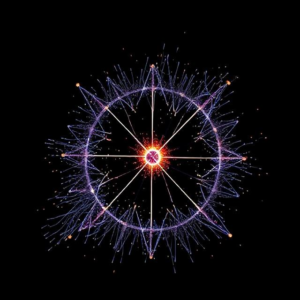1. What is Coulomb?
Coulomb is the unit used to measure electric charge. Named after Charles-Augustin de Coulomb, a French physicist, this unit helps us quantify how much electric charge an object has.
- In simple terms: A Coulomb is just a way to measure how much electric charge is on something. It’s like how we use “meters” to measure length and “grams” to measure weight.
Example:
- A Coulomb (C) represents a huge amount of charge—about 6.242 × 10¹⁸ electrons.

2. What is Coulombic Force?
Coulombic Force refers to the force between two electric charges. It’s the force that either attracts or repels charged particles, depending on whether the charges are the same or opposite.
- In simple terms: Coulombic force is the push or pull between charged objects. If the objects have the same charge (both positive or both negative), they will repel each other. If the charges are opposite (one positive and one negative), they will attract each other.
The strength of this force depends on:
- The amount of charge on the objects.
- The distance between the objects.
Formula for Coulombic Force:
The Coulombic force can be calculated using Coulomb’s Law, which says:
Where:
= Coulombic force (in newtons, N)
and
= The amounts of charge on the two objects (in Coulombs, C)
= The distance between the two charges (in meters, m)
= Coulomb’s constant, approximately
Detailed Explanation of Coulombic Force:
- Attraction and Repulsion:
- If both charges are positive or both negative, they will repel each other.
- If one charge is positive and the other is negative, they will attract each other.
- How it works:
- The force increases when the charges are larger (i.e., the numbers for
and
are bigger).
- The force decreases as the distance increases. If the two charges are far apart, the force between them is weaker.
- The force increases when the charges are larger (i.e., the numbers for
Example:
- Two positive charges will repel each other (like two positively charged balloons). The closer they are to each other, the stronger the repulsion.
- A positive charge and a negative charge will attract each other (like a magnet), and the closer they are, the stronger the attraction.
Summary:
- Coulomb is a unit of electric charge, and it helps us measure how much charge something has.
- Coulombic Force is the force between two charged objects, either attracting or repelling them, depending on the type of charges.
- This force depends on the amount of charge on the objects and the distance between them.
Tags: 1 Coulomb = 6.242 × 10¹⁸ electrons, 8.99 × 10⁹ N·m²/C², attraction, basic unit of charge. Coulombic Force, charge measurement, charged objects, Charles-Augustin de Coulomb, Coulomb, Coulomb's Law, Coulombic Force, electric balloons, electric field interaction, electric force, electric potential, electric quantity, electron flow, electrostatic force., 𝐹 = 𝑘 ⋅ ∣ 𝑞 1 ⋅ 𝑞 2 ∣ 𝑟 2 F=k⋅ r 2 ∣q 1 ⋅q 2 ∣ , force between charged particles, force decreases with distance, force formula, force increases with charge, 𝑘 k = Coulomb’s constant, like charges repel, magnets, opposite charges attract, 𝑞 1, q 2 = charges, 𝑞 2 q 1 , 𝑟 r = distance, Real-life Example, repulsion, SI unit, strength of interaction, unit of electric charge


